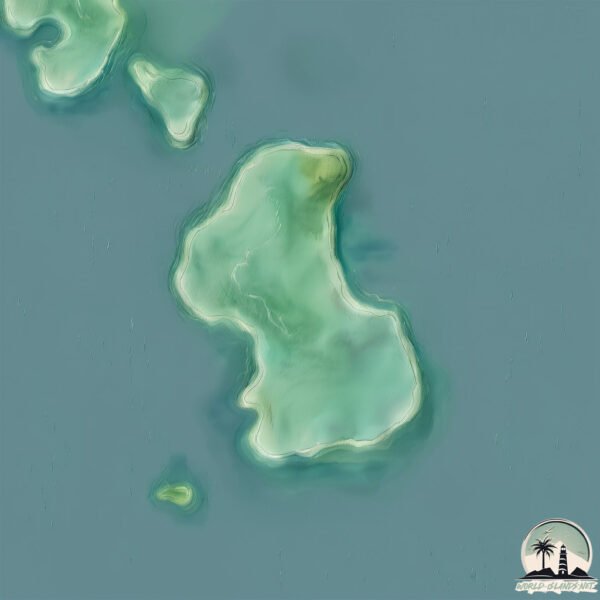Welcome to Sagō-jima , a Temperate island in the Seto Naikai or Inland Sea, part of the majestic Pacific Ocean. This guide offers a comprehensive overview of what makes Sagō-jima unique – from its geography and climate to its population, infrastructure, and beyond. Dive into the details:
Geography and size of Sagō-jima
Size: 1.324 km²Coastline: 6.2 kmOcean: Pacific OceanSea: Seto Naikai or Inland SeaContinent: Asia
Sagō-jima is a Small Island spanning 1.3 km² with a coastline of 6.2 km.
Archipel: Japan – An East Asian archipelago comprising four main islands and numerous smaller ones, known for its rich history, technological advances, and distinct culture.
Tectonic Plate: Amur – A minor tectonic plate in the region of the Amur River at the border of Russia and China, involved in complex interactions with the Pacific and Eurasian plates.
The geographic heart of the island is pinpointed at these coordinates:
Climate and weather of Sagō-jima
Climate Zone: TemperateClimate Details: Humid Subtropical ClimateTemperature: Hot Summer
Climate Characteristics: With continuous rainfall and hot summers, this climate is common in some coastal regions, supporting diverse vegetation.
Topography and nature of Sagō-jima
Timezone: UTC+09:00Timezone places: Asia/TokyoMax. Elevation: 39 m Mean Elevation: 32 mVegetation: Evergreen Needleleaf ForestTree Coverage: 32%
The mean elevation is 32 m. The highest elevation on the island reaches approximately 39 meters above sea level. The island is characterized by Plains: Flat, low-lying lands characterized by a maximum elevation of up to 200 meters. On islands, plains are typically coastal lowlands or central flat areas.
Dominating Vegetation: Evergreen Needleleaf Forest
Vegetation: 3 vegetation zones – Moderately Diverse Island
Infrastructure and Travelling to Sagō-jima
Does the island have a public airport? no .
Does the island have a major port? no .
The mean population of Sagō-jima is 371 per km². Sagō-jima is Moderately Inhabited. The island belongs to Japan .
Continuing your journey, Yashiro-jima is the next notable island, situated merely km away.
海界の村を歩く 瀬戸内海 佐合島 Ver.2(山口県)
平生町佐賀地区の南西海上1.9km、瀬戸内海国立公園内にある島。北と南に100mを超える山があり、ほとんどが丘陵傾斜地で、平 ...
海界の村を歩く 瀬戸内海 佐合島 Ver.2(山口県)
平生町佐賀地区の南西海上1.9km、瀬戸内海国立公園内にある島。北と南に100mを超える山があり、ほとんどが丘陵傾斜地で、平 ...
平生町佐賀地区の南西海上1.9km、瀬戸内海国立公園内にある島。北と南に100mを超える山があり、ほとんどが丘陵傾斜地で、平 ...
Sago Island 佐合島
山口県 瀬戸内の小さな島.
山口県 瀬戸内の小さな島.
山口県平生町佐合島 ドローン空撮
山口県平生町唯一の離島となる「佐合島(さごうじま)」 地元団体の依頼を受けて、ドローンによる空撮を行いました。
山口県平生町唯一の離島となる「佐合島(さごうじま)」 地元団体の依頼を受けて、ドローンによる空撮を行いました。
Japan is classified as Developed region: G7: Group of Seven – Major advanced economies, including Canada, France, Germany, Italy, Japan, the United Kingdom, and the United States. The level of income is High income: OECD.
News – Latest Updates and Headlines from Sagō-jima
Stay informed with the most recent news and important headlines from Sagō-jima. Here’s a roundup of the latest developments.
Loading...
Please note: The data used here has been primarily extracted from satellite readings. Deviations from exact values may occur, particularly regarding the height of elevations and population density. Land area and coastline measurements refer to average values at mean high tide.

